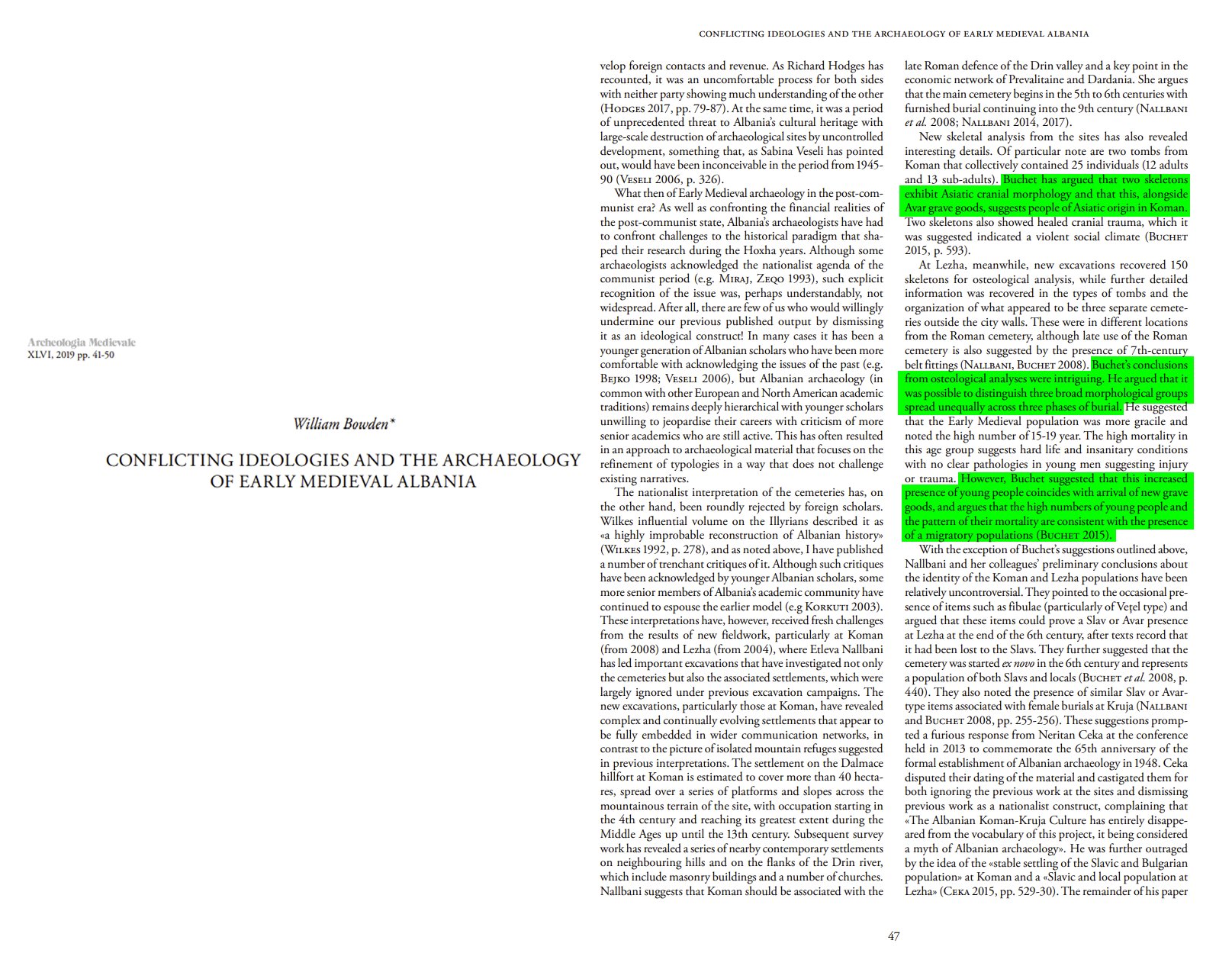This presence of this non-illyrian knobbed ware in Mati regions of Albania is particulary interesting also. How many non-Illyrians moved into this region at this time. Were there pockets and enclaves where they were linguistically Illyrianised, and were there places where they kept their own language?
I'm reminded of Wilkes argument that Albanians did not descend from the Illyrians, but that they came from transhumance shepherds.
The only dissonance is from you, I'm only trying to share and update the discourse with what the top academics in these fields are saying, and you are spazzing out. I've posted for years all the possible pro-Illyrian arguments that exist, and as we get close to solving it, and as I have learnt more along the way, I am only trying to push it further forward.
"The Albanian case that the Komani-Kruja cemeteries represent a
continuity of Illyrians rests on several arguments, notably the Illyrian character of the ornaments and the shapes of some grave-goods, hemispherical buttons, biconical beads, bracelets, the bronze hanging-lringes recalling lllyrian ornaments from the Mat valley.
These comparisons are certainly
valid, but the Albanian case is weakened by a highly improbable reconstruction of lllyrian history in this period.
This makes theIllyrians recover their lost independence during the collapse ofthe later Roman Empire and reassert their ethnic identity through liberation from Greco-Roman dominance in material culture.
This view regards the new fortifications in the area as measures against the independent Illyrians.
Out of this population came the Arberi of the tenth and eleventh centuries, represented by an early tumulus culture in southern Albania.
The
weakness of these arguments for an area where historical sources are non-existent seems obvious.
There can surely be nodoubt that the Komani-Kruja cemeteries indicate
the survival of a non-Slav population between the sixth and ninth centuries, and their most likely identification seems to be with a
Romanized population of lllyrian origin driven out by Slav settlementsfurther north, the
'Romanoi" mentioned by Constantine Porphyrogenitus (c32).
This interpretation is supported by the concentration of
Latin place-names around the
Lake ofShkoder, in the
Drin and
Fan valleys and along the road from
Lissus to Ulpiana in Kosovo, with some in the
Black Drin and Mat valleys, a distribution limited on the south by the line of the
Via Egnatia."
So, there was a Latinised Illyrian population living around the Lake of Shkoder, Drin and Fan valleys, and from Lezhe to Ulpiana, as well as some in Mat and Black Drin. These people left placenames like "Valbona" all the way up in the Albanian mountains (Beautiful valley in Latin).
What did the Proto-Albanian shepherds do with these Romanised Illyrians? Did they kill them, or integrate them linguistically as the Latins had before them? I don't know yet. If they assimilated them, we should expect higher percentages of this ancestry in those areas (Gegë) that were mentioned.
Lets check the percentages from Rrenjet that were posted the other day.
Taken with a grain of salt but nonetheless if we look at the Slavic haplogroups (I2a-Y3120 + R1a-M417) the total percentage comes to:
13.4%
This is quite close to J2b-l283 which shows up here as 15.3%
Should we then conclude that the Albanian language descends from these Slavic haplogroups?








